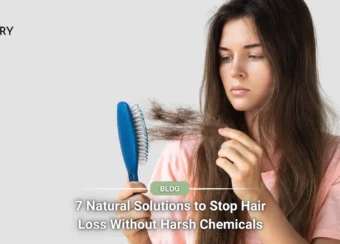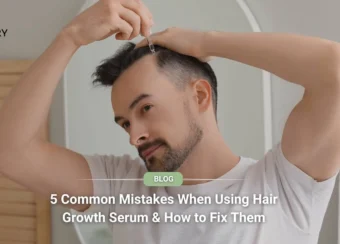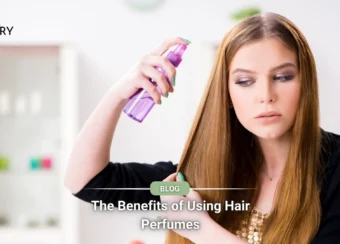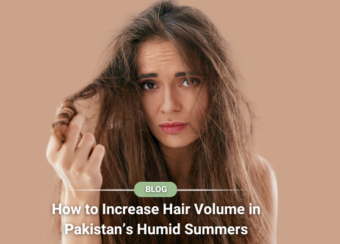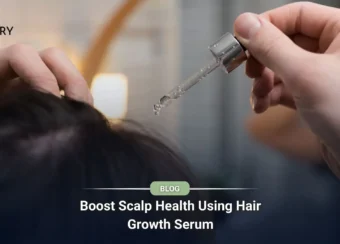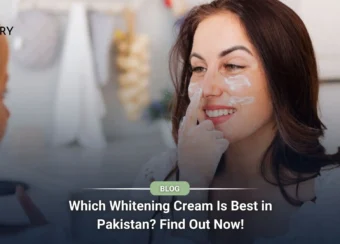How to Repair Damaged Curly Hair Without Cutting It
December 3, 2024 2024-12-28 14:47How to Repair Damaged Curly Hair Without Cutting It
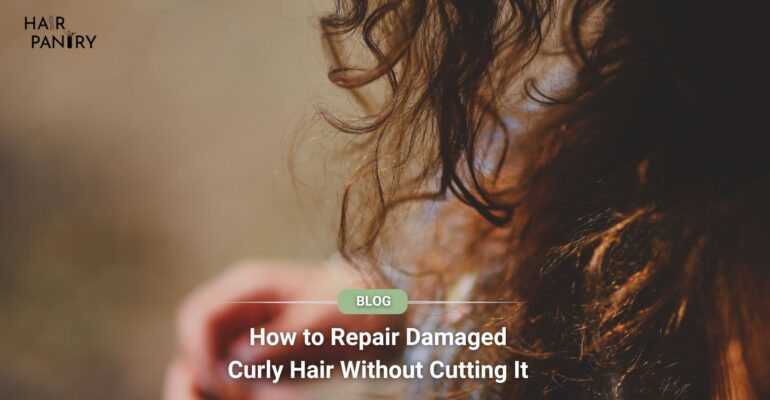
How to Repair Damaged Curly Hair Without Cutting It
Having curly hair is an achievement in itself, but it isn’t easy to manage. You need to have a healthy lifestyle and hair care routine in order to get those curls looking great. However, there are many factors that don’t let you sway your curls, especially the environment. Also, the structure of curly hair is more prone to damage and is not so great at maintaining moisture.
But all is not lost, there are many effective methods to manage curly hair, even if you don’t want to cut it. Cutting hair offers a quick solution but if you are concerned about the length, don’t stress. We will explore various techniques and tips to restore your curls to their former glory. Keep on reading to know some secrets!
Understanding Curly Hair
The unique structure of curly hair is somewhat of an upgraded version of wavy hair with more texture which looks great. But as mentioned earlier this pattern is more likely to lead to hair issues like dryness or worse, breakage.
Moreover, natural oils from the scalp have a harder time traveling down the length of the hair, which leads to dryness and frizz. Lastly, curly hair is more prone to damage from external factors such as heat, chemicals, and environmental stressors.
Identifying the Damage
Before proceeding further, you first need to find the specific issues you’re dealing with. These are common signs to spot damaged curly hair:
- Frizz and flyaways
- Split ends and breakage
- Dullness and lack of shine
- Dryness and lack of moisture
- Tangling and difficulty in managing
Knowing the extent of the damage will help you determine the best course of action. It’s also important to differentiate between different types of damage, such as dryness, breakage, and split ends.
Non-Cutting Repair Methods
We know that many people want to keep volume and are in search of methods to repair their damaged curly hair. So here are a few methods to do just that:
Protective Hairstyles
A quick way to minimize damaged curly hair is to go for a protective hairstyle that can save you from daily styling. What this will do is it will minimize the effort as well as reduce the risk of breakage. Some of the popular protective hairstyles include braids, twists, updos, and buns.

Things to Know Before Styling
When you go for a protective hairstyle, it’s important that you maintain your hair’s moisture and avoid styling stiff.
Deep Conditioning Treatments
The best way to get intense nourishment and hydration to the hair is deep conditioning treatment. It helps in restoring moisture and improves the elasticity of hair. But make sure you choose the right conditioner like our Repair Restoring conditioner. Because it has natural ingredients with endless benefits and no harm to your hair, unlike chemically formulated conditioners.
How to Apply a Conditioner
The general rule of using a conditioner is to apply on clean, damp hair and leave it on for some time. While there are many great practices to implement like covering your hair with a shower cap or using a towel, it’s up to you to decide your approach. At last, you will have to rinse thoroughly and follow up with hair oil or a leave-in conditioner.
Protein Treatment
Protein treatments are essential for strengthening damaged hair and preventing breakage. For your information, hair is made up of a protein called keratin. To replenish and reinforce the hair’s structure, you can opt for a protein treatment. But you have to be very careful if you go for this method. You will need to balance protein treatments with moisturizing treatments so the amount of protein can be controlled. Otherwise, protein excessiveness can lead to stiffness and brittleness.
How to do Hair Protein Treatment at Home
Same as a conditioner, you will need to clean and damp hair first. Then you can leave it on for the recommended product time which is usually around 10-20 minutes. Lastly, keep in mind that you should rinse thoroughly and follow up with a moisturizing conditioner.
Note:
Look for protein treatments that contain hydrolyzed proteins, as these are more easily absorbed by the hair.
Avoiding Heat Styling
A major issue that people often neglect is relying on heat styling and chemical treatments. While they seem safe and sometimes the only option, they can result in significant damage to curly hair. So, if you can, start avoiding heat styling tools like curling irons, blow dryers, and flat irons; you can opt for heat-free styling such as air drying, braiding, or flexi rods.

What if You Don’t Have Any Other Option
If you are in a hurry or in a situation where there’s no other option than heat styling, then here’s a simple checklist to follow:
- Use heat protectant spray.
- Keep the temperature at the lowest.
- Don’t style in a hurry.
Scalp Care
All there is to care about is the scalps, honestly. We can say that again, they are the cornerstone of your hair. That’s why your scalp should be healthy if you want great hair. Scalp care includes removing buildup and promoting a healthy environment for hair growth.
Quick Scalp Care Tips
Here are a few quick scalp care tips that you can incorporate into your routine:
- Perform scalp massage multiple times a week.
- Try DIY scalp treatments with natural ingredients like tea tree oil.
- Use gentle, sulphate-free shampoo like Bond Repair Shampoo.
Pro Tip:
Natural Oils have antimicrobial properties that help keep your scalp clean and healthy.
Trimming Split Ends
While the goal is to repair damaged hair without cutting it, regular trims are still important to maintain healthy hair. Trimming split ends helps to prevent further damage and breakage. Be sure to only trim the very ends of your hair to avoid losing length. The great thing about this is that you can trim your own hair at home using sharp hair-cutting scissors.

Lifestyle Changes for Healthier Hair
While treatments are a great way to restore the lost shine and volume of your hair, there’s no denying the significance of having a healthy life. A healthy lifestyle that has a proper diet, sleep, and a hair care routine will surely improve your hair quality.
Here’s a deep dive into lifestyle changes for better hair health:
Diet and Nutrition
A healthy diet is a must for healthy hair, it’s no brainer. Be sure to include lean protein, healthy fats, fruits and obviously some vegetables into your diet. A general tip while creating a diet plan is to look for food that is rich in vitamins, minerals like biotin, omega-3 fatty acids, and vitamin E. These foods will guarantee healthy hair growth and repair damaged hair.
Hydration
Staying hydrated is important for overall health, even your hair. So, make sure to drink plenty of water throughout the day. This will keep your hair and scalp hydrated throughout the day. Because dehydration can lead to dryness and brittleness.
Quick Tip:
Aim to drink at least eight glasses of water a day to stay hydrated.

Stress Management
Few people are aware of the fact that stress can have a negative impact on hair health. It leads to hair loss and breakage which is why you need to incorporate stress management techniques into your daily routine. You can practice meditation, yoga, and deep breathing exercises. Lastly, taking time to relax and unwind can help to improve your overall well-being and promote healthy hair growth.
The Verdict
It is possible to repair damaged curly hair without cutting it, but before you turn to remedies, it’s essential to know what you are going through. Once you know how bad it is, then you should incorporate one or two methods that you feel comfortable doing. Lastly, don’t neglect the importance of having a healthy lifestyle.
Frequently Asked Questions About Damaged Curly Hair
How to Fix Damaged Curly Hair Without Cutting It?
Focus on deep conditioning treatments, protein treatments, and moisturizing techniques if you want to fix damaged curly hair without cutting it. Also, avoid heat styling and chemical treatments, and use protective hairstyles to minimize further damage.
How to Oil Curly Hair Overnight?
To oil curly hair overnight, apply a generous amount of your chosen hair oil (e.g., argan oil) to your hair and scalp. Massage it in, then cover your hair with a shower cap or silk scarf to prevent oil transfer and maximize absorption.
How Can I Heal My Curly Hair Naturally?
You can naturally heal your hair using sulfate-free shampoos and with deep conditioning treatment. Also, incorporating natural oils like argan and coconut oil can also be of great help.
How to Fix Frizzy Curly Hair?
To fix frizzy curly hair, use a hydrating shampoo and conditioner. Also, leave-in conditioner or hair oil should be applied to avoid heat styling. To lock in moisture and keep your curls defined and frizz-free, try the LOC method (Liquid, Oil, Cream).
What is the Best Hair Oil for Curly Hair?
The best hair oil for curly hair in our opinion is argan oil. Why? Because it is super lightweight, non-greasy, and is rich in essential fatty acids and Vitamin E. These two nutrients and others altogether nourish, moisturize, and protect your curls.

